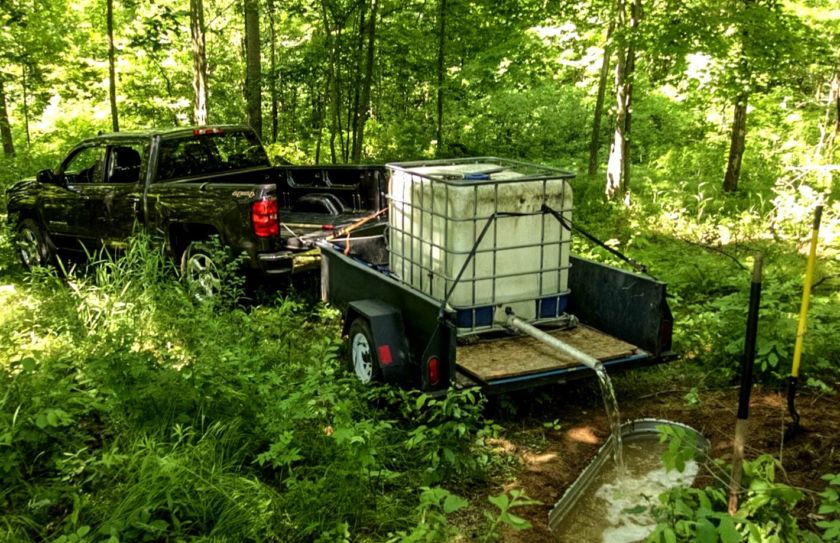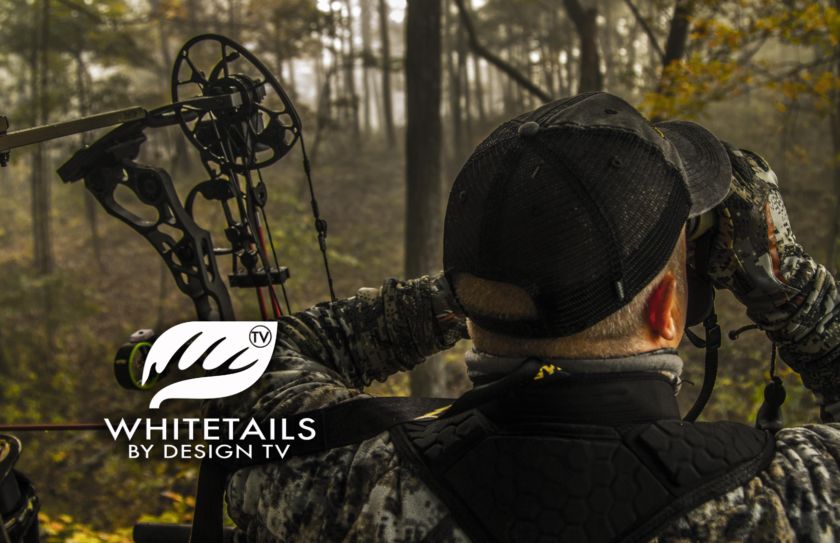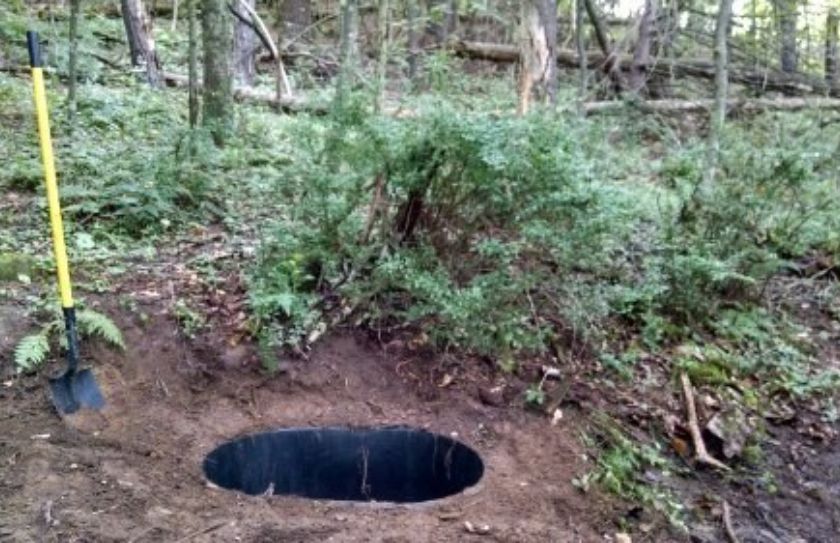When whitetails are bedding dry and traveling to or from food, using a deer waterhole to anchor buck movement can pay huge rewards during the entire hunting season. The perfect waterhole setup takes a little planning and lot of hard work, but several bow stands at once, can often be enhanced. There are 3 ingredients that I have experienced, that work to combine extremely well to make sure that your deer waterhole becomes the center of attention to the local buck herd. While not a 100% necessary ingredient, make sure to check out the Conclusion for the icing on the cake of high powered waterhole setups!
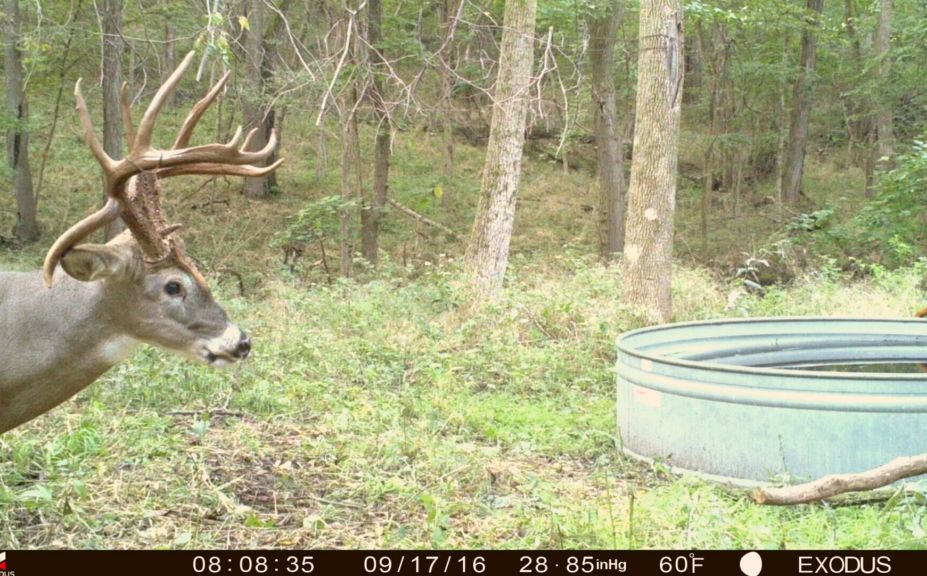
Buck Movement Waterholes For Anchoring Attraction
There are a few important simalarities that my best waterholes have shared. Why do some waterholes attract a portion of the local deer movement, while others appear to attract the entire local buck herd? I find that these 3 ingredients need to take place, to give your waterhole the best chance for success:
1. Painfully Obvious X Factor
If a deer can't help but move within 5-10' of a waterhole when cruising down their favorite daily corridor, imagine the power of a waterhole that is in the middle of 3-5 convering trails. By placing a waterhole in the middle of an X of deer movement, a stand located at the end of each X is greatly enhanced. Our trail cameras reveal that mature bucks are most likely to travel by at least 2 out of 4 stand locations in a set up such as this. A waterhole that supports merely 1 stand may create 1 great stand location, but I personaly prefer making 3-4 stands very good, instead of placing all of my eggs in 1 basket.
2. Open and Social Water Hotspots
Cramped quarters are for frogs and snakes. However, deer sure seem to prefer a social hotspot with a little room to move around. Try the 10 deer test. If you can imagine about 10 deer standing comfortably around your waterhole, then it is about as open as it needs to be, within mixed ag to heavy ag regions. If you are hunting in a heavily forested or wilderness setting, make sure to give the local deer herd the larger amount of space that they are used to seeking within their daily lives.
3. Mid Movement Drink and Cruise
A far back hidden entry corner of a food plot, a cruising corridor between bedding and feeding, or a remote travel X between bedding areas are 3 of my favorite locations to place a waterhole. Why? Because I can get in and out of a bowstand with a low potential for spooking deer, and I can take full advantage of buck movements all day long. By sticking too close to the center of a major food source or too far into a buck's remote bedding area, you limit the effectiveness of your waterhole to a specific 1/2 of the day: Morning or Afternoon. Instead, by staying more within the middle of potential daytime buck movements, you are set up to take advantage of a mature buck "drink and cruise", all day long. A waterhole location that takes advantage of converging trails, is socially open and can create all day hunting movement is not only a great place for a bowstand, but for a trail cam as well!
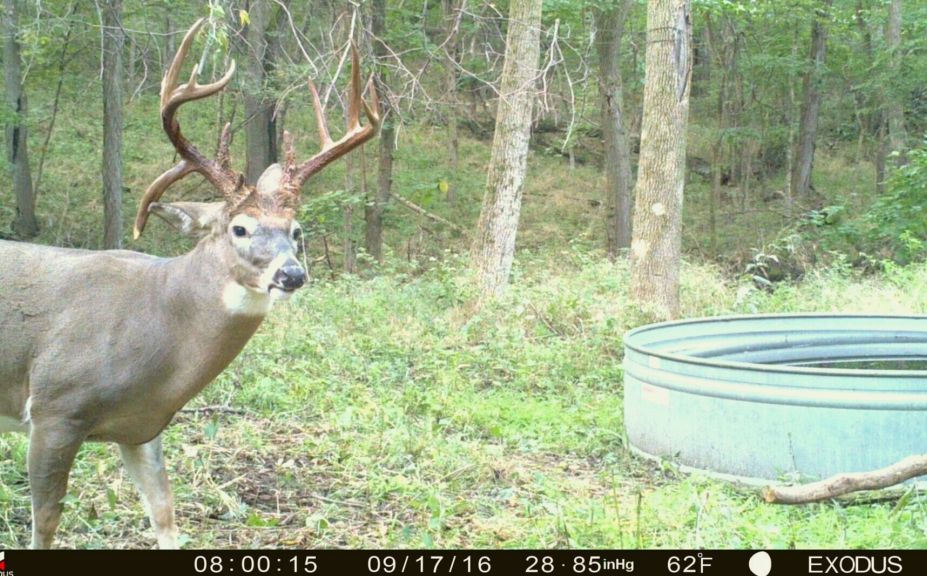
*After over 100,000 pics and videos over the last year (we use one at nearly every waterhole!), we are amazed at the dependability, fit and finish of our Exodus Trail Cams. We are excited to offer you a $20 discount when you use code WHSolutions at check-out for your next Exodus Lift or Lift II purchase!
Conclusion For Using A Deer Waterhole
Creating an anchor of deer movement doesn't take a lot of guesswork to get right, but it does take a lot of hard work and planning. Keeping your waterholes within the X of mid day movement as well as open and social, can be the 3 main ingredients that will combine to enhance multiple bow stands this hunting season. So what's the icing on the cake? Try adding a vine mock scrape to your waterhole to even further anchor the local buck movement - it works!
